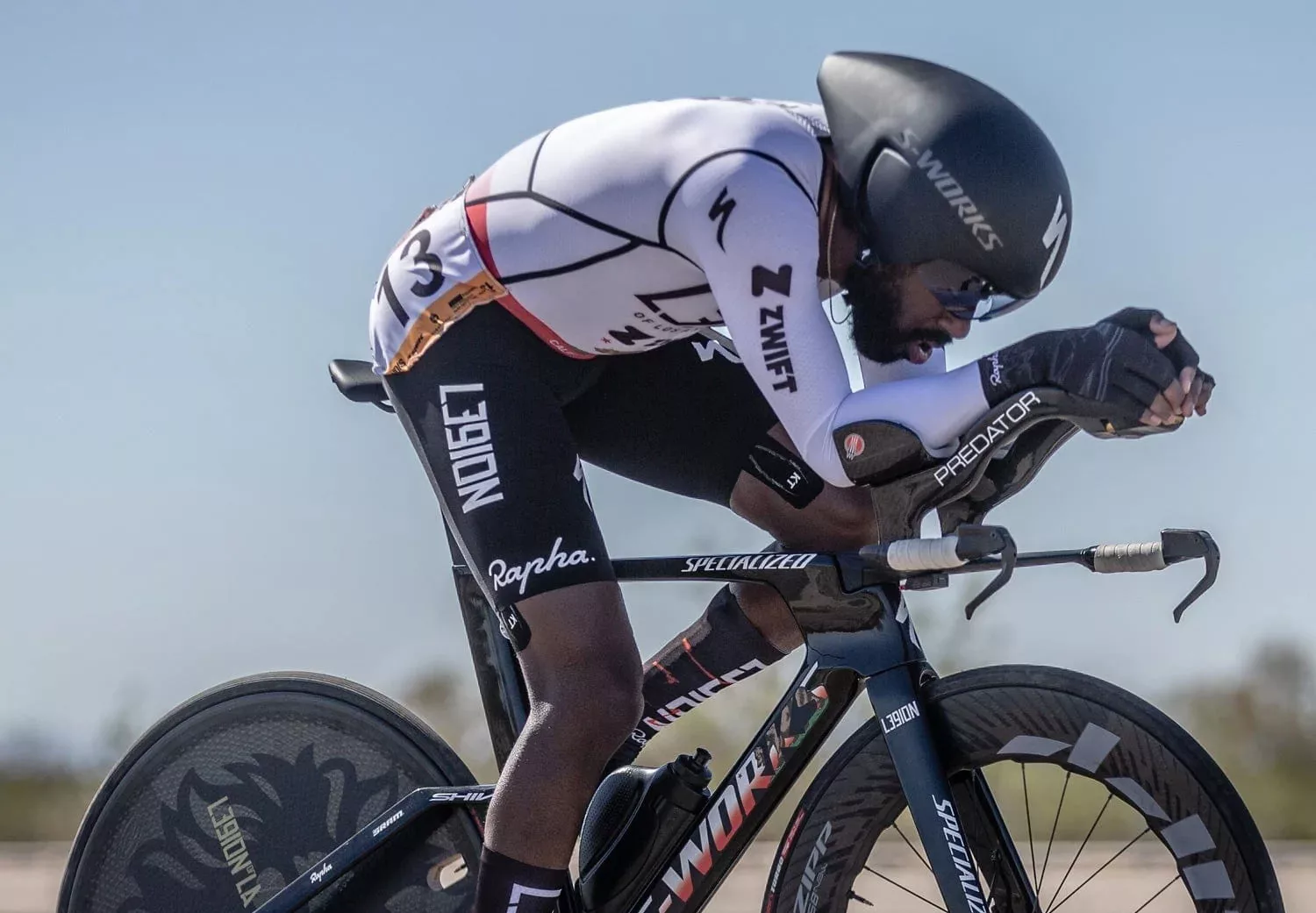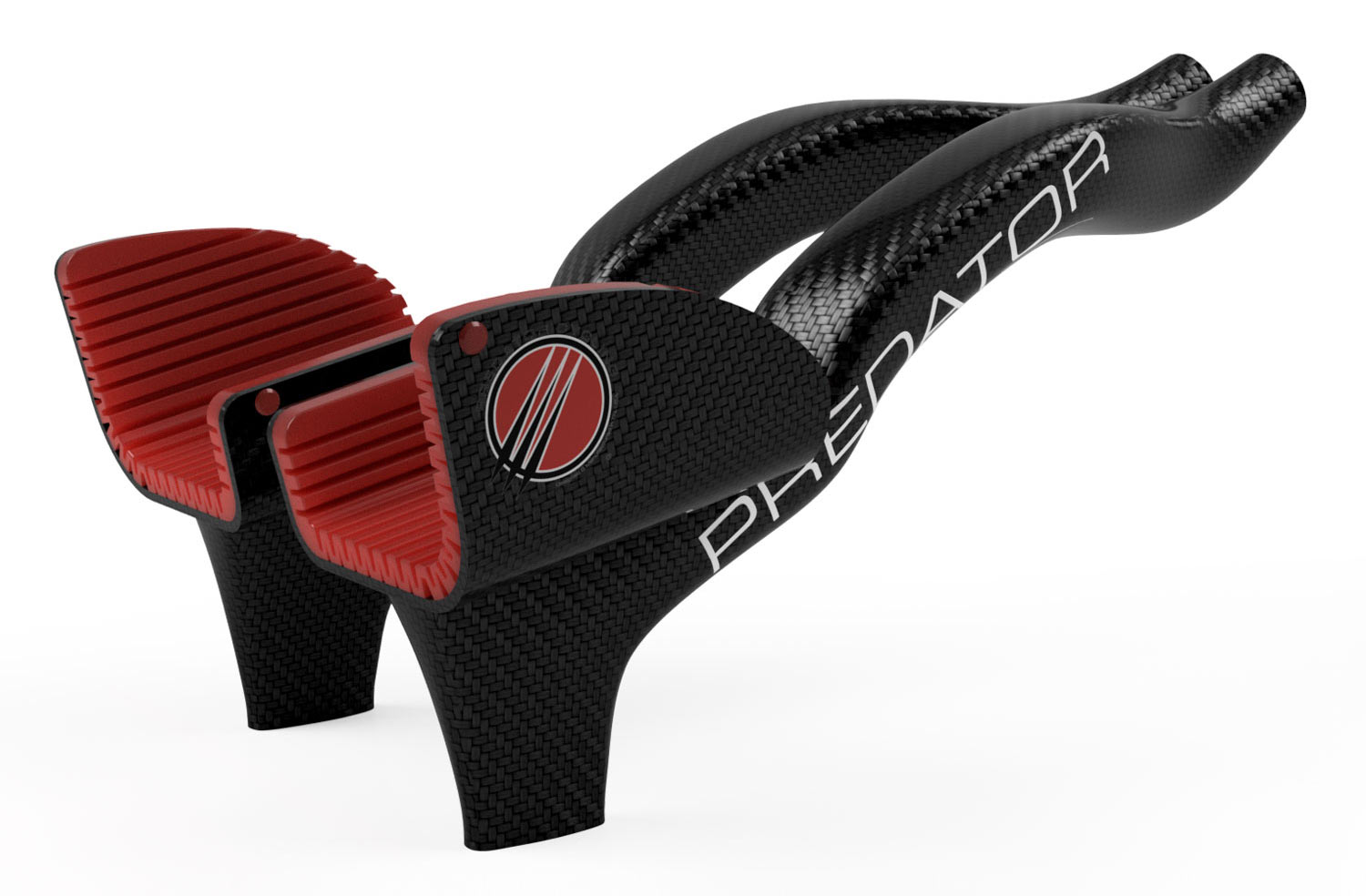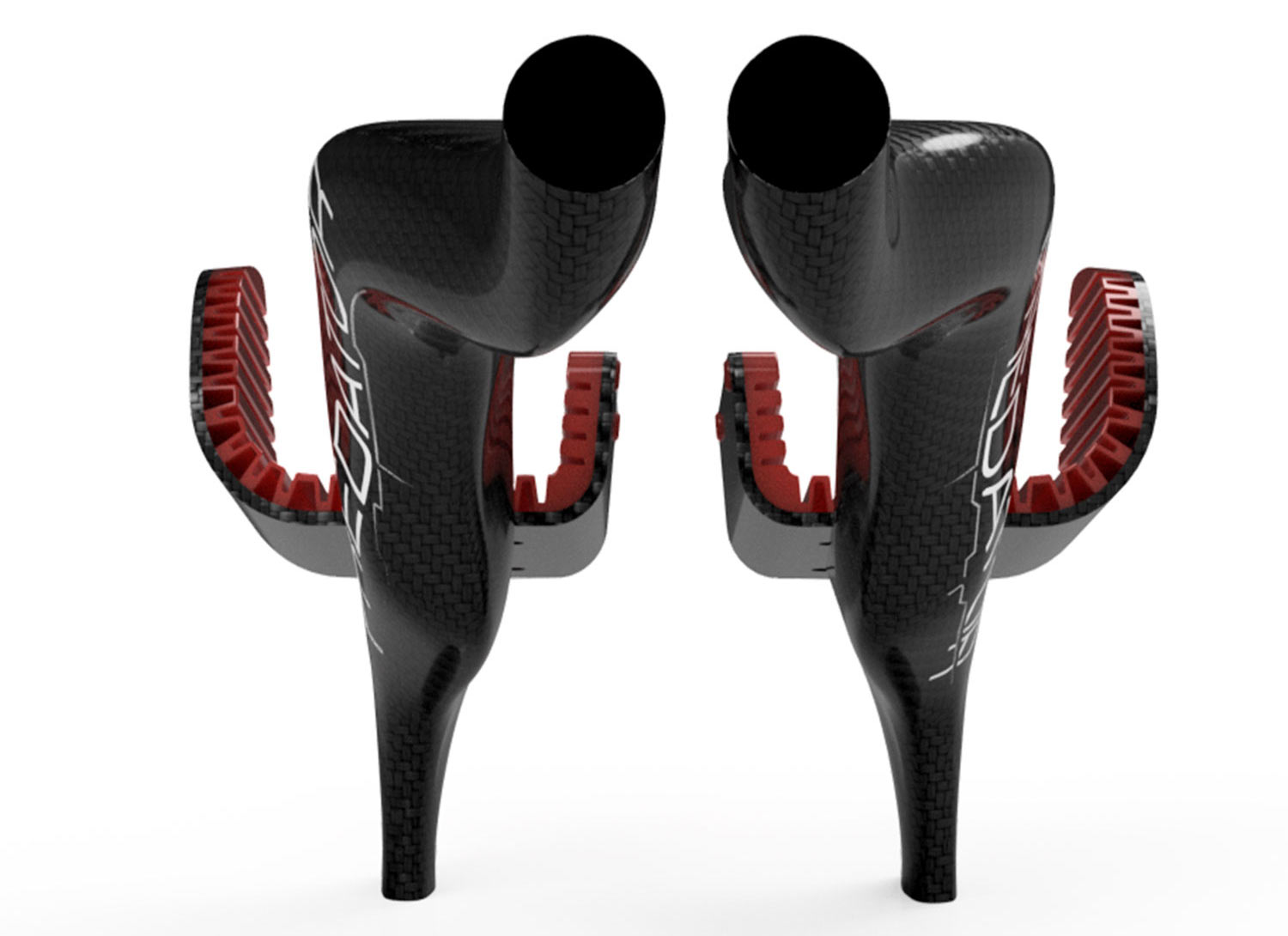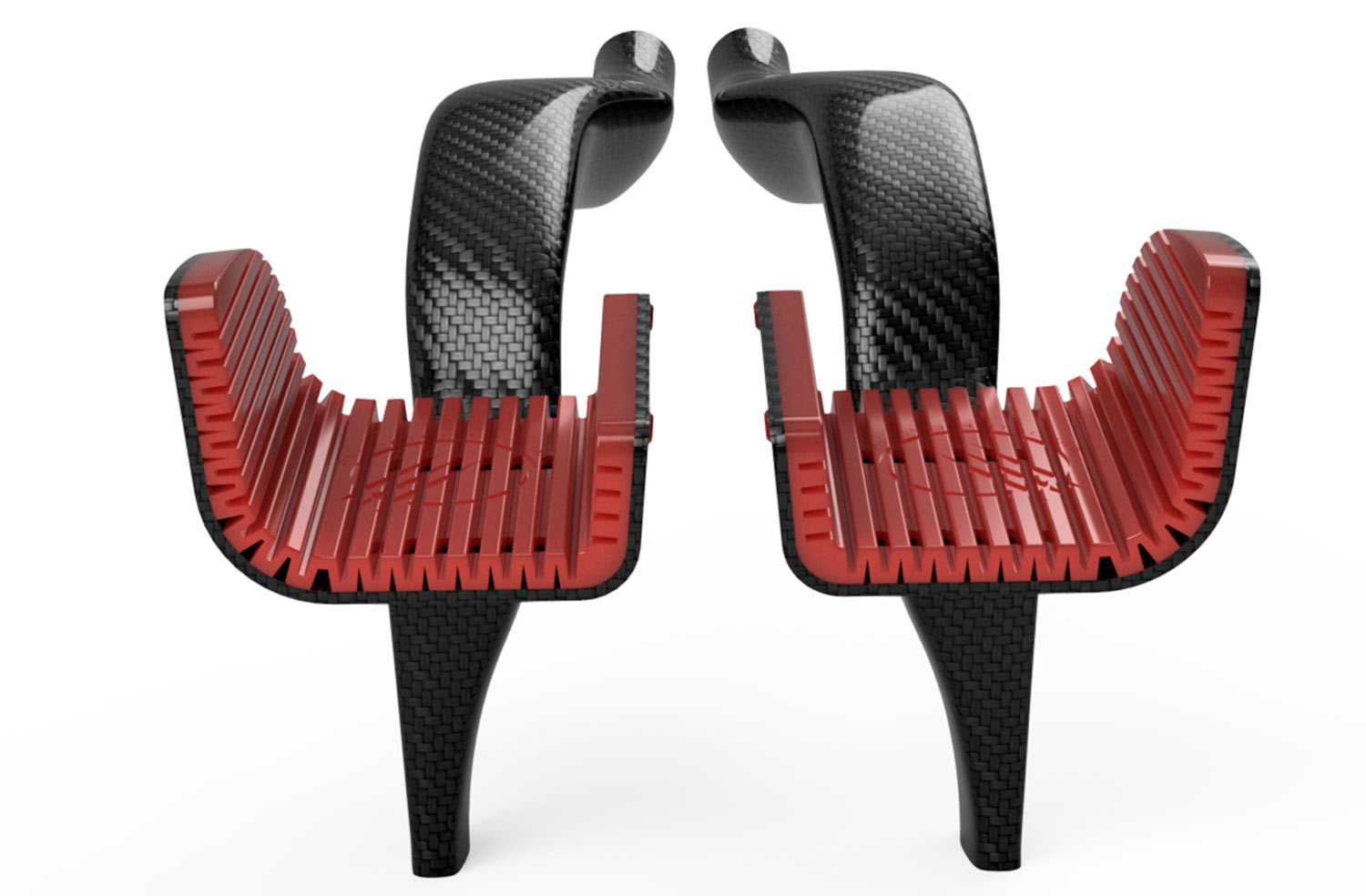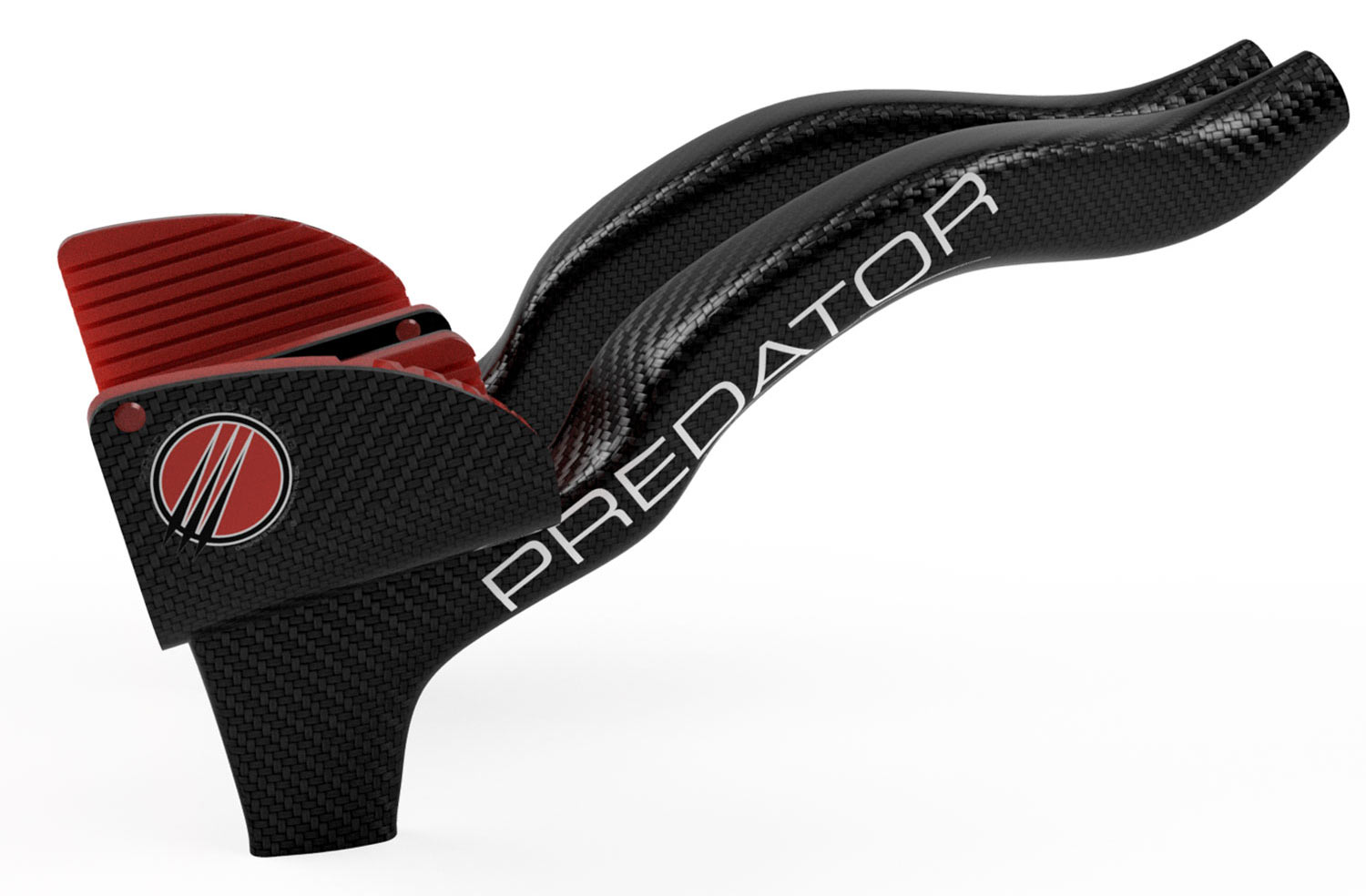The new Predator Cycling Aerobar Extensions are a carbon fiber TT/Triathlon cockpit addition that’s custom made for you, and they’re like nothing you’ve seen before.
They’re built with a hybrid manufacturing method, fusing carbon fiber composite layups over a structural 3D-printed skeleton, the shape of which is designed specifically for each arm using photogrammetry, computer simulation, and AI predictive technology. If that sounds like a lot, there’s also a Metaverse component…
What is Photogrammetry?
Photogrammetry is taking a bunch of photographs of a person, and then stitching them into a 3D mesh. So, a friend would take pics from all angles of you in your aero position on your bike, somewhere between 30 to 100 photos. Predator’s software turns those into a virtual 3D object, which they use to design the handlebars.
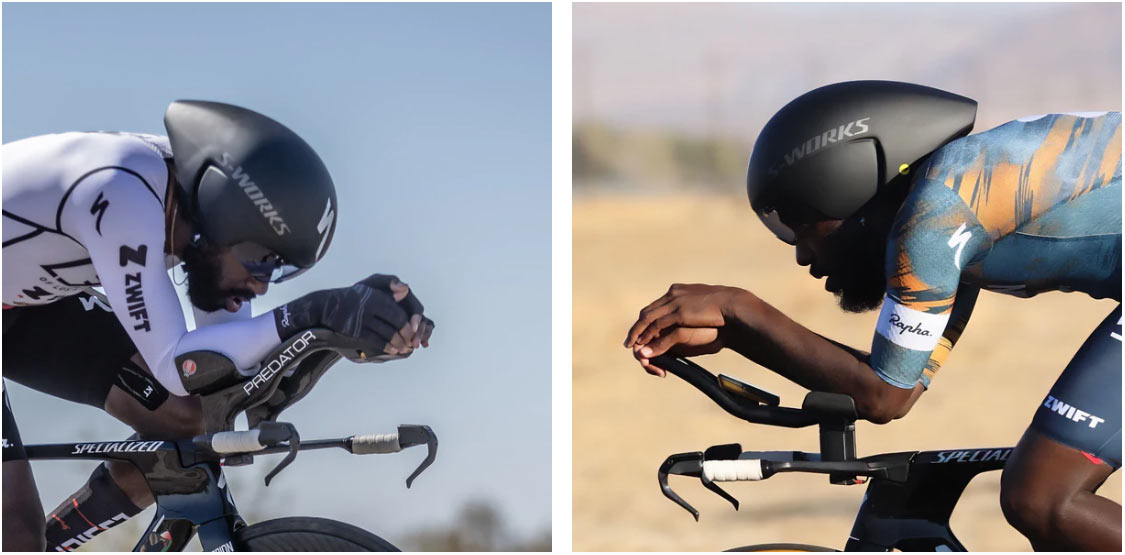
The fun part of all this is that it’s literally just the tip of the iceberg of what they’re working on. For Williams, they scanned his entire body and are simulating full body, arm, and even hand gesture positions, and even predicting common movements, to optimize every facet of your aerodynamics.
Predator founder Aram Goganian says that, over the lifetime of an athlete, they’ll get faster in the wind tunnel, but it takes years. That’s because each wind tunnel session might only check 10 to 30 positions. Even if you did 10 sessions per year, that’s at most 300 positions. With their new technology, they can simulate thousands of positions overnight.
Once the optimum positions are identified, the ideal hand and arm positions are used to create aero bars and extensions that also take the handlebars and other equipment into consideration, plus wind conditions, the rider’s average speed, and other criteria (which Aram says is a computational nightmare). The outcome is a cockpit that creates the most aerodynamic rider-plus-bike system.
The base price for the bars, using photogrammetry to create the custom shape, is $1,795.
If you want the CFD optimization to refine the shapes further to optimize more of your body position, that’ll add an additional $1,000 for the starter package. And it can go up from there depending on how advanced you want to get.
And the Metaverse component?
It’s tied into the whole thing, using Nvidia’s Omniverse system. Aram says that technically their entire design and manufacturing process is in that Metaverse.
Meaning, rather than send you a photo or video of a simulation, they can give you access to their simulation in real-time so you can see the products they’re designing for you. If you have a VR headset, you can virtually touch and move it.
They’re available now, with a 4-6 week lead time. Claimed weight ranges from 250g to 370g.
